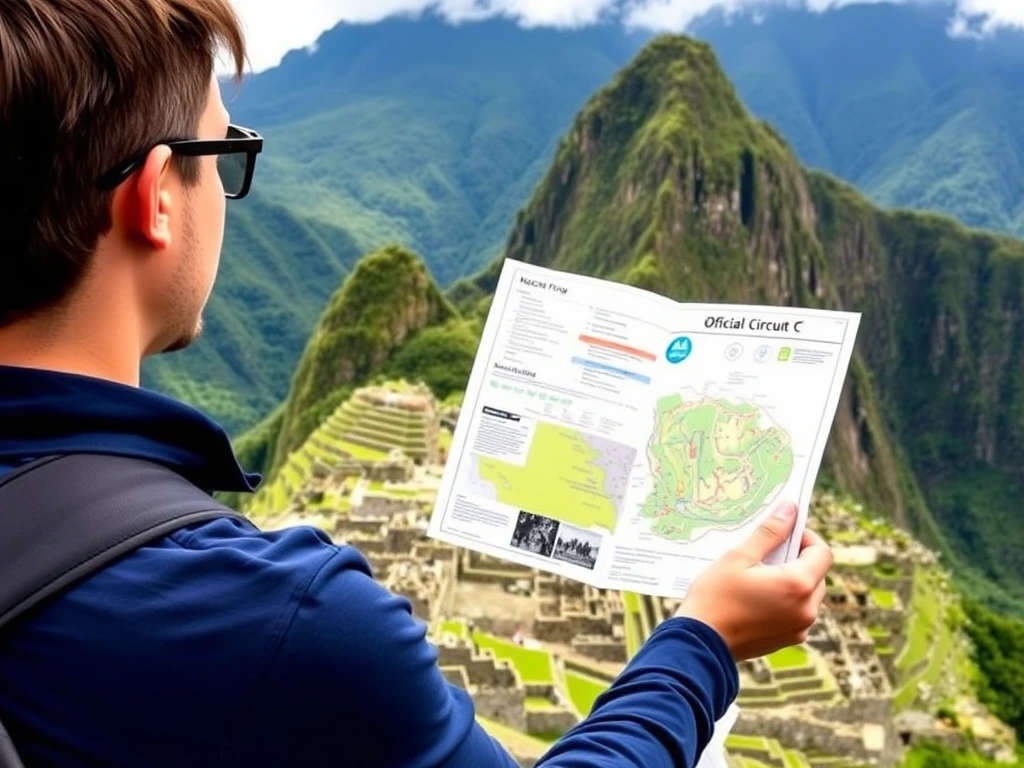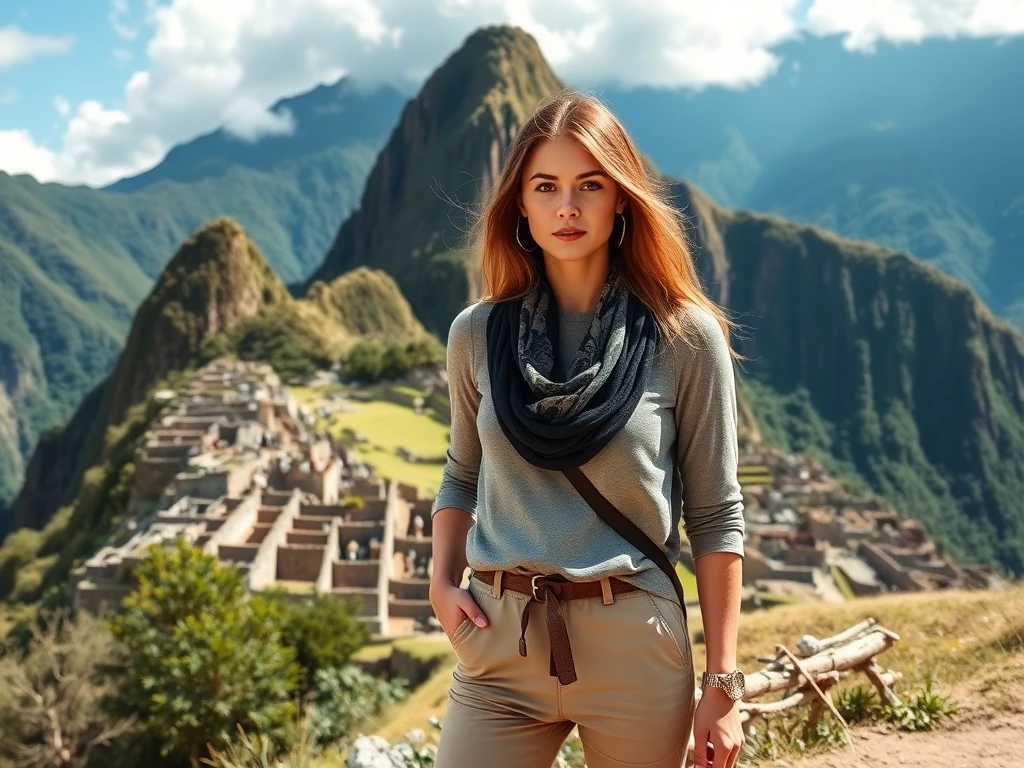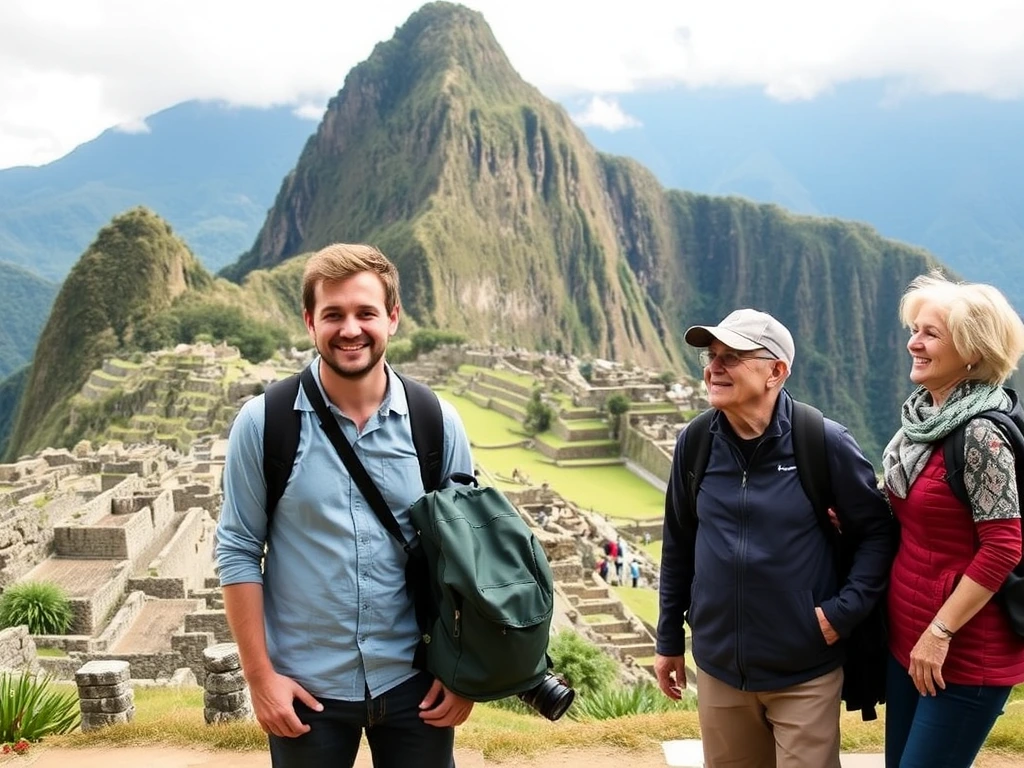Planning your visit to Machu Picchu isn’t just about buying a ticket—it’s about choosing the right circuit that matches your travel style and expectations. Since 2021, Peru introduced official Machu Picchu circuits to protect the site and enhance visitor experience. These routes determine the order in which you visit areas, the viewpoints you’ll enjoy, and how much time you’ll spend exploring this Wonder of the World. Choosing wisely can transform your journey from ordinary to extraordinary. |
What Exactly is a Circuit in Machu Picchu—and Why Does It Matter?
| A Circuit is Your Pathway Through History |
A circuit at Machu Picchu is a predefined route designed to regulate foot traffic and preserve this UNESCO World Heritage site. Visitors can no longer wander freely; instead, you follow a specific trail that ensures sustainability while still offering breathtaking views. But here’s the key: not all circuits are the same. Your choice determines what you see and how you experience this mystical citadel.
|
How Circuit Choice Shapes Your Experience
| Viewpoints, Flow, and Comfort Matter |
Beyond the map, each circuit offers a unique rhythm. Some allow sweeping panoramic shots at sunrise, while others take you deep into temples and terraces. Your circuit affects:
Pro tip: book early. Tickets are limited, and the most scenic circuits sell out quickly. That’s why many travelers rely on expert planners like Ile Tours to secure their ideal route months in advance. |
Tips for a Stress-Free Machu Picchu Circuit Experience
| Expert Advice for an Unforgettable Day |
Want it hassle-free? Ile Tours handles every detail, from securing your preferred circuit to arranging luxury transport and personalized guides. You focus on the magic; we handle the rest. |
Why Booking With Experts Beats Doing It Alone
| The Difference is in the Details |
DIY planning sounds exciting—until you discover how fast tickets sell out and how confusing the official booking system can be. Missing your dream circuit or train time can ruin the experience. With Ile Tours, you get:
Because a destination this iconic deserves a flawless experience. Don’t leave it to chance—elevate your Machu Picchu adventure with Ile Tours. |
Circuit 1 vs Circuit 2 vs Circuit 3: Which Machu Picchu Route Is Right for You?At Machu Picchu, your ticket determines your experience. Peru’s Ministry of Culture now requires visitors to choose from structured circuits—curated flows through the citadel that manage conservation, control crowds, and shape the views, sites, and even the level of physical effort you’ll face. Picking the right circuit can mean the difference between snagging that bucket‑list postcard photo, exploring sacred Inca temples up close, or conquering iconic side hikes like Huayna Picchu or Machu Picchu Mountain. Below you’ll find a clear, traveler‑friendly comparison—designed especially for U.S. luxury and comfort‑seeking travelers who want maximum payoff without logistical headaches. |
Quick-Glance Comparison Grid
| Feature | Circuit 1 (Panoramic) | Circuit 2 (Classic) | Circuit 3 (Royalty / Lower) |
| Primary Focus | Upper terraces & postcard views; optional add‑ons (Machu Picchu Mountain, Inti Punku, Inca Bridge in season). | Balanced: photo viewpoints and a guided walk through core urban/ceremonial sectors (Temple of the Sun, Sacred Rock, etc.). | Lower urban area—royal & sacred precincts; base for Huayna Picchu / Huchuy Picchu / Gran Caverna variants (availability varies by season). |
| Access to “Classic” Photo Angle | Yes (Upper Terrace / Guardian House lookouts, depending on sub‑route). | Yes—similar angle from slightly lower terrace (2A/2B routes). | No access to top terraces; lower “agricultural sector” views only (still scenic, but different angle). |
| Time in Site (avg.) | ~2.5 hrs (Upper Terrace only) up to 4–6 hrs w/ Mountain add‑on. | ~2.5 hrs typical walkthrough. | ~2.5 hrs base; 4–5+ hrs w/ Huayna; up to ~7 hrs w/ Gran Caverna (seasonal). |
| Physical Effort Scale* | Medium (terraces & stairs). High if adding Machu Picchu Mountain. | Medium; sustained walking w/ stairs but manageable for most acclimatized travelers. | Low‑Medium for 3B (urban only); High for Huayna Picchu (steep), Medium‑High for Gran Caverna; Low‑Medium for Huchuy Picchu (shorter). |
| Ideal Traveler Type | Photography‑first, tight schedules, or repeat visitors chasing upper‑level panoramas. | First‑timers who want the most complete “walk inside Machu Picchu” + photo. | Adventure add‑ons (Huayna) or those wanting sacred precincts w/ less climbing (3B); families may like Huchuy Picchu. |
| Seasonal Limits | Some sub‑routes (Inti Punku, Inca Bridge) high season only. | Generally year‑round. | Some variants (Gran Caverna, Huchuy Picchu) high season only & very limited daily spaces. |
*Effort assumes proper acclimatization in Cusco/Sacred Valley; altitude, humidity, and uneven Inca stonework increase perceived difficulty.
Circuit 1 (Panoramic): For Iconic Views & Upper Terraces
| Best For Trip‑Defining Photos—Minimal Time Inside Ruins |
Circuit 1 is anchored in the upper agricultural terraces around the Guardian House—home of the classic wide‑angle shot that dominates postcards, guidebooks, and social feeds. It’s the go‑to for travelers who prioritize photography over in‑depth archeological touring. Note: you do not descend into the main urban core on most Panoramic sub‑routes, so pair with Circuit 2 on another day if you want to explore temples. :contentReference[oaicite:2]{index=2}
Fitness Notes: Upper terraces involve uneven stairs at altitude; the Machu Picchu Mountain extension dramatically increases effort (longer ascent; significant elevation gain). Travelers with knee issues often prefer the photo‑only 1‑B route. |
Circuit 2 (Classic): The First‑Timer’s Favorite
| Balanced: Photo + Core Ruins Walkthrough |
Widely considered the most complete “single day” experience, Circuit 2 lets you capture a postcard‑worthy view and then descend for a guided exploration of the main urban & ceremonial sectors—Temple of the Sun, Sacred Plaza, Temple of the Condor, Royal Tomb areas (as permitted by current management flow). Perfect for first visits, families with active teens, and travelers who want depth without extreme hiking. :contentReference[oaicite:8]{index=8}
Duration averages ~2.5 hours; steady walking with many short stone steps—altitude plus humidity can make it feel more demanding, so pace yourself and hydrate. |
Circuit 3 (Royalty / Lower Sector): Sacred Zones & Adventure Add‑Ons
| Lower Urban Area + Access to Huayna Picchu & Seasonal Extensions |
Circuit 3 concentrates on the lower royal & religious precincts—House of the Inca, Temple of the Sun, Temple of the Condor and associated sacred enclosures—while skipping the high terraces that provide the classic postcard angle. Many travelers pair this circuit with a second‑day Circuit 2 to “complete the picture.” It’s also the required base for Huayna Picchu and other specialty hikes (availability & age limits apply). :contentReference[oaicite:12]{index=12}
Expect ~2.5 hrs base (3‑B) to 4–5 hrs (Huayna) and up to ~7 hrs with Gran Caverna in high season. Spaces are scarce—plan well in advance, particularly June–October. |
Huayna Picchu vs. Machu Picchu Mountain: Elevation, Effort & Experience
| Which Side Hike Completes Your Circuit? |
These two famed add‑on hikes deliver wildly different feel—and your base circuit matters. Huayna Picchu (3‑A) is steep, dramatic, and adrenaline‑charged, with tight staircases and sheer drop‑offs rewarding climbers with angled views back across the citadel. Machu Picchu Mountain (1‑A) is longer, higher, and more gradual—better for steady trekkers who prefer wide paths and sweeping valley panoramas. Many luxury travelers combine one of these hikes with a guided cultural circuit on a separate day for recovery and richer storytelling. :contentReference[oaicite:18]{index=18}
Weather & Season: Trails can grow slick in the November–March wet season; dry season (May–September) offers firmer footing but heavier demand. |
Physical Conditioning & Altitude Prep
| Arrive Ready—Your Body Will Thank You |
Even “moderate” Machu Picchu walking days involve altitude (~2,430 m / 7,972 ft at the citadel; higher on side hikes), humidity, and relentless stone steps. Build stair and leg strength before travel; schedule at least 2–5 nights in Cusco or the Sacred Valley to acclimatize—especially before Huayna Picchu or Machu Picchu Mountain. Hydrate aggressively, take it slow, and use trekking poles (where permitted) to ease descents. :contentReference[oaicite:22]{index=22} Booking a guided, well‑paced itinerary (with rest days and altitude staging) dramatically improves comfort and safety—another reason many travelers entrust logistics to seasoned operators like Ile Tours. |
Best Entry Times & Crowd Strategy
| Morning Mist vs. Afternoon Clarity—Choose Your Window |
Early slots (6:00–8:00 a.m. ranges depending on ticket) often mean cooler temps and the chance—if clouds break—for moody sunrise‑light photos; however, morning fog is common in the cloud forest. Late‑morning to early‑afternoon windows can deliver clearer skies but heavier traffic in peak season. Ticketed time blocks are strict; you must enter within your scheduled window and complete the circuit within the allowed dwell time (roughly 2.5–4+ hrs depending on route). :contentReference[oaicite:24]{index=24} Side hikes are tied to specific entry bands (e.g., Huayna Picchu & Machu Picchu Mountain have controlled start times and capped numbers), so align your rail/bus logistics accordingly. Expert tour coordination helps avoid missed windows—something that can be costly if permits are sold out. |
Accessibility & Mobility Considerations
| Navigating Stone Steps, Uneven Terrain & Adaptive Support |
Machu Picchu was not built with modern mobility devices in mind: expect narrow stone stairs, terraces, and irregular surfaces. That said, the Circuit 3‑B Royalty Designed route is the least demanding and has been used (with assistance) by travelers using adaptive equipment; specialized outfitters have introduced trekking wheelchairs that require support staff to maneuver slopes. Access to Huayna Picchu, Machu Picchu Mountain, and most steep spurs is not wheelchair‑feasible. :contentReference[oaicite:26]{index=26} If mobility is a concern, work with a tour operator experienced in assisted routing, pacing breaks, and stair management. Ile Tours can pre‑arrange porters, adaptive supports, and tailored pacing so you (or a loved one) can experience key vantage points safely and comfortably. |
Availability, Ticket Caps & Advance Booking Strategy
| Permits Sell Out—Especially for Huayna & Peak Dates |
Daily capacity at Machu Picchu now flexes seasonally—up to 5,600 visitors per day in high season (June 1–Oct 15 & select holidays) and ~4,500 the rest of the year. Each circuit and sub‑route has its own quota; premium hikes (Huayna Picchu, Gran Caverna) sell out fastest. Government policy reserves a limited pool of next‑day tickets for in‑person purchase in Cusco and Aguas Calientes, but lines are long and availability uncertain—advance online purchase is strongly advised. :contentReference[oaicite:28]{index=28} Typical lead times: Book Huayna Picchu 2–3+ months ahead in peak season; Machu Picchu Mountain 1–2 months (earlier for June–August); Classic Circuit 2 ideally 1–3 months, especially if you need a specific date aligned with luxury rail or lodge stays. :contentReference[oaicite:29]{index=29} Booking through a trusted operator gives you real‑time availability monitoring, backup date holds, and integrated transport—key when higher‑demand circuits vanish quickly on the official system. Ile Tours routinely manages these moving parts so your preferred circuit, train class, and guide line up perfectly. |
How to Combine Circuits for a Deeper Luxury Experience
| Two‑Day Strategy for Photography + In‑Depth Exploration |
Many seasoned travel writers recommend splitting Machu Picchu across two entries: Day 1 for a full Classic walkthrough (Circuit 2) and Day 2 for Huayna Picchu (3‑A) or another specialty lower‑sector route—this way you get both the iconic panoramas and the up‑close sacred architecture plus a summit experience if desired. This staged approach reduces fatigue, hedges against fog, and lets photographers chase different lighting. :contentReference[oaicite:31]{index=31} Luxury Bonus: Pair staggered entry days with an overnight at a premium property (e.g., in Aguas Calientes or the Sacred Valley) and private guide continuity—exactly the kind of seamless, high‑touch planning Ile Tours specializes in curating. |
Packing & Comfort Checklist by Circuit
| What to Bring (Within Size Limits) |
Wet‑season (Nov–Mar) trails can be slick; dry season (May–Sep) brings strong sun exposure—adjust layers accordingly. |
Subtle but Smart: Why Many Travelers Let Ile Tours Handle It
| Your Time at Machu Picchu Is Precious—Make It Count |
Between fluctuating daily caps, seasonal sub‑routes, staggered entry windows, altitude acclimatization, and sell‑out mountain permits, the Machu Picchu booking matrix can overwhelm even experienced travelers. Industry experts consistently recommend booking in advance through trusted specialists—both to secure the right circuit and to align rail, guides, and accommodations without headaches. Ile Tours quietly takes care of these moving parts so you can focus on the awe, the photos, and the story you’ll take home. |
Key Tips for Booking Your Perfect Machu Picchu Circuit with Ile Tours
| Best Season, Limited Availability & Combined Tickets |
The ideal time to visit Machu Picchu is during the dry season (May to September), offering clear skies and optimal trail conditions. However, these months also bring the highest demand, meaning tickets for circuits and premium add-ons like Huayna Picchu and Machu Picchu Mountain sell out fast—often months in advance. Secure your spot early and consider combined entry tickets to access panoramic viewpoints, lower circuits, and bonus trails like the Sun Gate or Inca Bridge. |
How to Optimize Your Itinerary with Trains, Guides & Luxury Stays
| Details That Elevate Your Experience |
With Ile Tours, you don’t just book tickets—you unlock a stress-free, fully choreographed experience with timed entries, train alignments, and luxury touches that turn logistics into unforgettable moments. |




